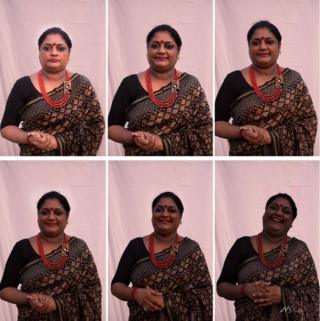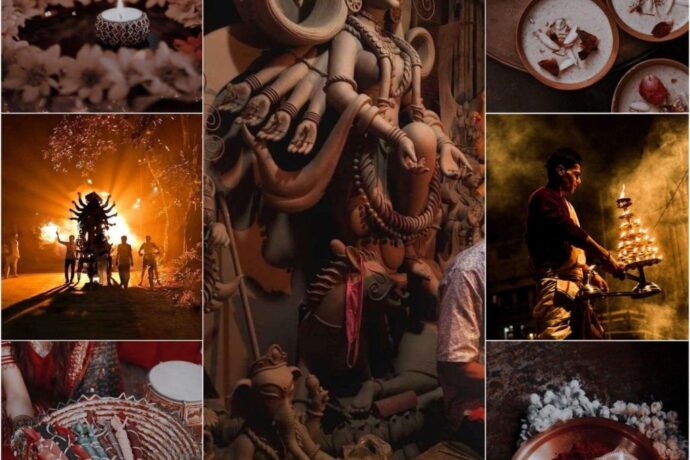Image copyright
Midhun Divakar
Image caption
Sowmya Radha Vidyadhar is a poet and author
Black, which has dominated the worldwide fashion panorama for many years, has by no means been dominant in conventional Indian clothes. But now Indian sari designer Sharmila Nair is using the color to make a forceful political and feminist assertion, writes the BBC’s Geeta Pandey in Delhi.
Ms Nair’s marketing campaign, 18 Shades of Black, has 18 women, draped in stunning black saris designed by her, speaking in regards to the refined gender discrimination they face of their every day lives.
Ms Nair calls these “unseen restrictions” as a result of they’re made to really feel so regular, so pure, that very often women begin to place these limitations on themselves.
The marketing campaign, Ms Nair informed the BBC, was impressed by final 12 months’s protests within the southern state of Kerala after the Supreme Court revoked a ban on women of menstruating age from getting into the Sabarimala temple, one of the holiest Hindu shrines.
Hinduism regards menstruating women as unclean and they also have been traditionally banned from getting into the temple.
Ms Nair stated she was “shocked” by the big quantity of women who joined the protests.
Thus was born 18 Shades of Black – 18 as a result of there are that many steps within the Sabarimala shrine, and black as a result of that is the color all devotees put on.
Image copyright
Midhun Divakar
Image caption
Indu Jayaram says she realised a lot later in life that your pores and skin color could be behind discrimination
“We are told we are impure during our periods, and we buy into these ideas. Even now I have friends who would voluntarily stay away from visiting a temple or participating in religious rituals during their periods,” says Ms Nair.
“So I thought if so many women can fight for the rights of a deity, why can’t they fight for the rights of women? And I thought if so many women came together, imagine the kind of changes they can bring about.”
![]()

Media playback is unsupported in your system
Media captionSabarimala: Women defy historic temple banKerala paralysed amid protests over temple entry
Why has a Hindu temple divided India’s women?
![]()
This refined conditioning of the thoughts, she says, begins in early childhood.
“We are informed girls and boys are completely different, ladies do not speak or snort loudly. In villages, even immediately, ladies are inspired to examine humanities, not drugs or engineering.
“There is quite a bit of emphasis on marriage and having kids. For occasion, in lots of elements of India, the second you flip 18, your loved ones will begin speaking about fixing your marriage. And when you’re married, they will begin asking whenever you’re going to have a baby. And upon getting a baby, they will begin asking whenever you’re going to have the following one.
“We internalise these restrictions. We talk about women’s empowerment, but in our daily lives we submit to these curbs unquestioningly,” she says, including: “I’m trying to address these unseen restrictions.”
 Image copyright
Image copyright
Midhun Divakar
Image caption
Interior designer Smitha Naik says the marketing campaign makes use of garments to discuss points which are vital to the broader inhabitants
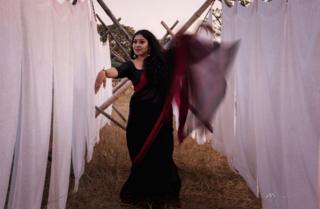 Image copyright
Image copyright
Midhun Divakar
Image caption
Actor and dancer Anumol says she fought her household to pursue a profession in dance
The marketing campaign makes use of fashion to challenge religion, questioning outdated beliefs which are perpetuated by a society steeped in patriarchy.
It tackles points like physique shaming, discrimination on the idea of pores and skin color, early marriage, stigma round menstruation, caste discrimination, patriarchy and even a scarcity of clear bogs for women.
Finding women to take part within the marketing campaign, says Ms Nair, was not straightforward.
Why are Indian women ‘Happy to Bleed’?
India women battle to enter temples
“I spoke to 80-90 women and I heard very compelling personal stories, but most were not willing to go on record. They were worried because of the controversy over the Sabarimala issue. They told me they were afraid how it would be moulded, how it would be received by the larger society.”
But then these “18 wonderful women” got here ahead, prepared to speak in regards to the restrictions they confronted and the way they stood up to them.
Her fashions are “women of substance”, they embrace a lawyer, an actor, a poet, a psychologist, writers and workplace employees, a homemaker and a techie.
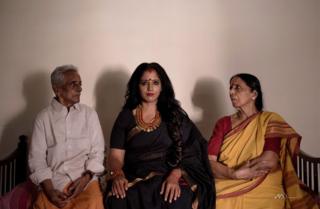 Image copyright
Image copyright
Midhun Divakar
Image caption
Writer Lekshmy Rajeev says society locations an enormous burden on women to at all times be good
In the movies that Ms Nair has uploaded on social media, we hear highly effective private tales.
Remya Saseendran, a author and improvement communications specialist, says she was introduced up to consider that motherhood was non-negotiable, and that there was one thing mistaken along with her as a result of she did not need to be a mom.
“But as I grew older, I realised that a lot of these expectations were imposed from outside… and I realised that motherhood really doesn’t at all have to be the identity of a woman. Motherhood is a choice, just as not being a mother is a choice,” she says.
Psychologist and lactation marketing consultant Swati Jagadeesh talks in regards to the “toxic relationship” she had along with her mom and the way she discovered it troublesome to share something along with her.
“So I want my child to trust me. She should have the confidence to tell me anything under the sky,” she says, and provides: “My mother taught me how not to be a mother.”
![]()
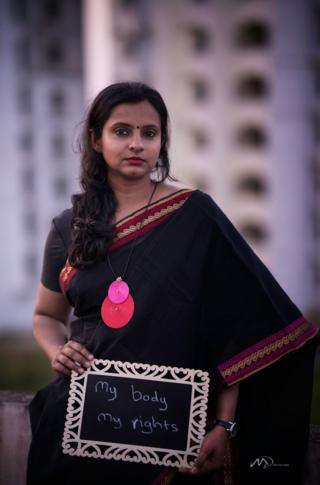 Image copyright
Image copyright
Midhun Divakar
Image caption
Remya Saseendran says she was introduced up to consider that there was one thing mistaken along with her as a result of she did not need to be a mom
![]()
Interior designer Smitha Naik, who’s featured in a single of the movies, tells the BBC that the marketing campaign makes use of garments to discuss points which are vital to the broader inhabitants.
In her video, Ms Naik is seen speaking in regards to the unflattering manner wherein women drivers are perceived and the bullying they face on the roads and says that these are points that want to be talked about constantly.
“It doesn’t end with one campaign or one protest.”
Fashion and inventive artwork, she says, could be successfully used to convey vital messages, the kind that 18 Shades of Black is making an attempt to do.
“There’s a popular saying that when you draw a line, you’re not just drawing a line, you’re changing the universe. By wearing black, we are trying to send a message that just like the Sabarimala pilgrims, it is our colour too. We are also entitled to it. We are also an equal part of this society. We are also part of this sea of black.”
Photos by Midhun Divakar
Read extra from Geeta Pandey

